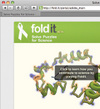 The walk to and from school can’t be uphill both ways, but going it alone might make it seem that way. When judging the steepness of a hill, people overestimated its angle more when alone than when they were accompanied by—or even thinking about—a friend, reports an international group of researchers led by Simone Schnall of University of Plymouth in England in the Journal of Experimental Social Psychology in May. The longer the volunteers had been friends with their companions, the less steep the hill seemed.
The walk to and from school can’t be uphill both ways, but going it alone might make it seem that way. When judging the steepness of a hill, people overestimated its angle more when alone than when they were accompanied by—or even thinking about—a friend, reports an international group of researchers led by Simone Schnall of University of Plymouth in England in the Journal of Experimental Social Psychology in May. The longer the volunteers had been friends with their companions, the less steep the hill seemed.
See the rest of the story as it appeared in Scientific American MIND in [html] or [pdf]


